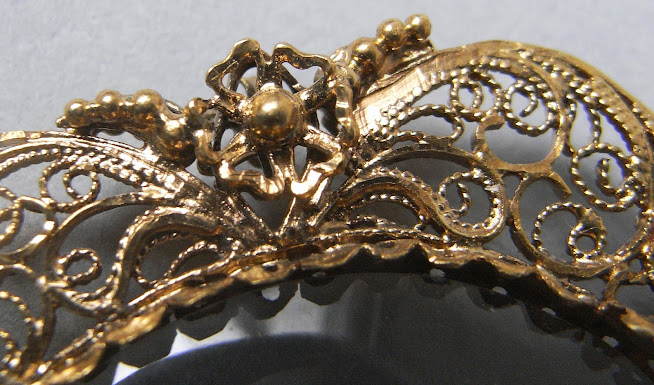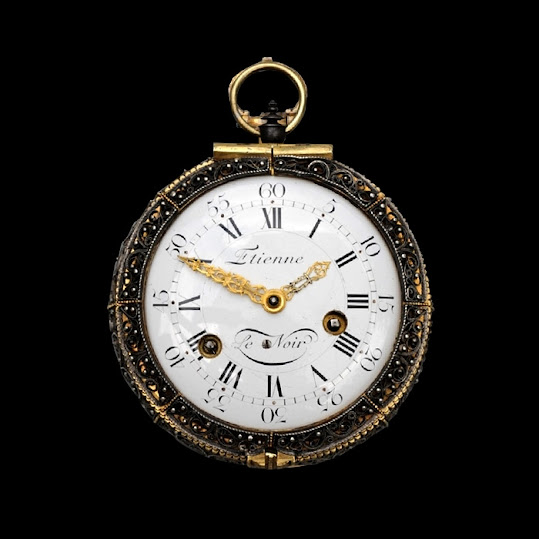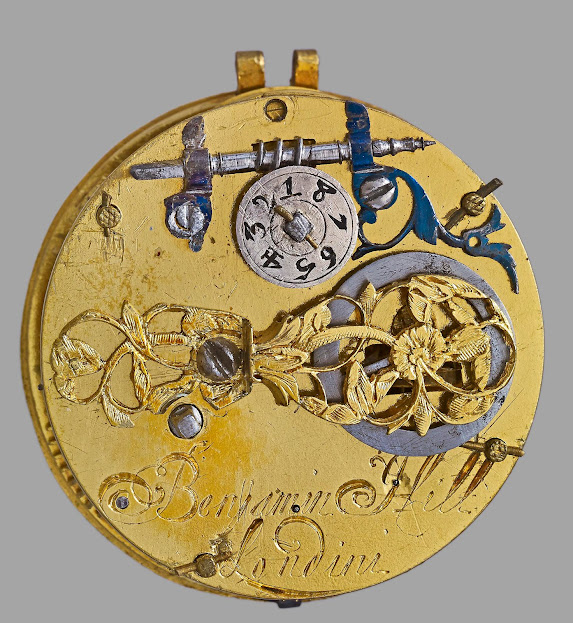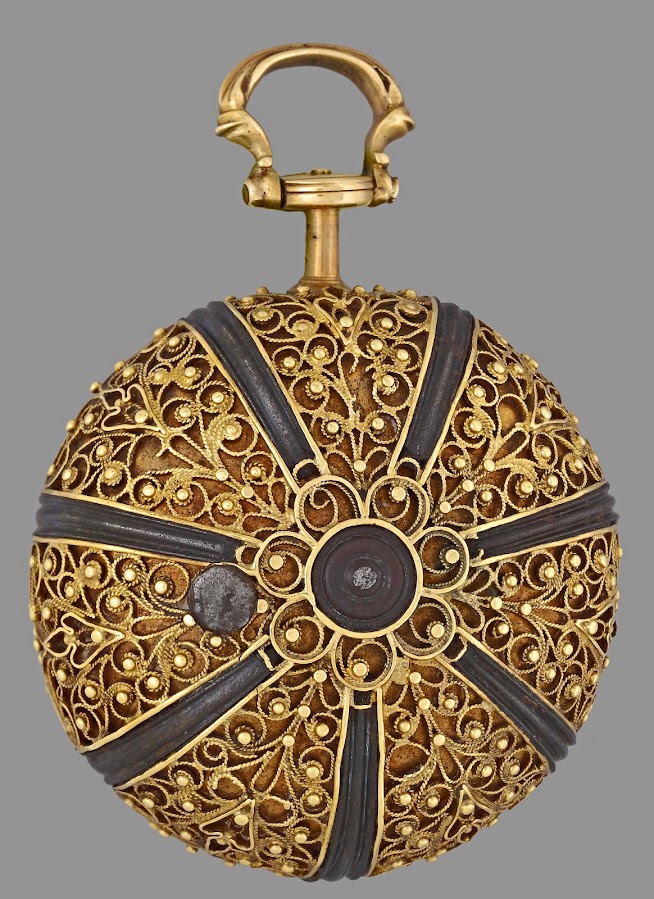Some 17th/ 18th Century Filigree Watch Cases.
The style and techniques of the filigree used on these watch cases give an indication of the filigree work employed in the towns of manufacture at the time of their construction.
____________
Silver Filigree and Silver Gilt Case.
Movement signed Etienne Le Noir, Paris.
C. 1760.
Previously with Messrs Dekker of Amsterdam.
I am not aware of any other silver filigree cased watches by this famous family of makers of very high quality clocks and watches.
Diam 11.5 cms.
These large watches are usually described as Coach Watches.
https://www.dekkerantiquairs.nl/en/watches/coach-watch-3272.html
_______________
Watch and Pair Case.
Matthys Bockels of Haerlm (Haarlem), Netherlands.
The case was almost certainly made by another specialist craftsman.
c. 1640.
Victoria and Albert Museum.
An important piece for establishing Mid 17th Century Netherland filigree styles.
_________________
Gold Filigree Cased Watch.
London.
c.1640?
Formerly with dealers Pieces of Time.
As I know nothing of the intricacies of Watch and Clock manufacture I will quote directly from the website of Messrs Pieces of Time.
"The watch would probably have
been worn with the filigree case lined in richly coloured silk to match the
owners attire.
The cases originally
housed a pre-balance spring verge. This
has been replaced with a purpose made movement in about 1740 by Conyers Dunlop,
an eminent maker of the period. At the
same time a new dial, hands, gold pendant and protective outer case were
fitted. The outer was almost certainly a
replacement for a plain, pressed leather case which had protected the
decorative filigree work for a century.
It is unusual for a movement to be replaced in order to extend the life
of a watch. More commonly a new case is
fitted to the movement as this was the more valuable part".
https://www.antique-watch.com/product/rare-17th-century-gold-filigree-watch/
_________________________
Benjamin Hill. fl 1640 - 1670.
Fleet Street, London.
Watchmaker.
Member of the Blacksmiths' Company who became a Free Brother in the
Clockmakers' Company in 1640. He was Assistant in 1651, Warden in 1652 and
Master of the Company in 1657.
British Museum.
Size - 3.43 cms - Max Diam.
https://www.britishmuseum.org/collection/object/H_1888-1201-225
____________
Samuel Betts (active 1648 - 1674)
Pair cased watch in Silver Filigree Case.
1665 - 1670.
Lombard Street, London.
British Museum.
5.13 cms Max Diam.
https://www.britishmuseum.org/collection/object/H_1958-1201-2318
-------------------------
17th Century Gold Filigree and Steel Watch Case.
The Mid 18th Century Movement is a replacement by B Chance?.
33.4 mm diam.
I suspect that the case is French but further research is needed.
Image and info from.
https://www.britishmuseum.org/collection/object/H_1874-1103-1
___________________
17th /18th Century Silver Filigree Pair Cased Verge Watch.
Joseph Windmills (1640 - 1724).
The case attributed by the BM to Cuthbert Weaver.
Outside Diam. 4.65 cms.
1672 - 75.
Inscription : CW [inner case].
Inscription note: CW believed to be Cuthbert Weaver. This is
noted by Philip Priestley as being the earliest maker's punch known on a silver
watch case.
Watch case maker Cuthbert Weaver. Apprenticed to George Nau
(dates unknown). Admitted to Clockmaker's Company in 1682. Dead by 1698.
Philip Priestley suggests his mark probably CW.
Philip T. Priestley, 'Early watch case makers of England
1631 to 1720', pub. 2000
Loomes, , ‘Watchmakers and Clockmakers of the World,
Complete 21st Century Edition’. Pub. N.A.G.Press, 2006.Height (with base) 25.5
cm, (without base) 20.5 cm.
Images and information above from:
https://www.britishmuseum.org/collection/object/H_1958-1201-2296
For the Windmills father and son see - Neale, J.A.: "Joseph and Thomas Windmills Clock and
Watch Makers 1671 - 1737", 1999.
.............
A similar watch case of gold filigree is perhaps that in the National Museum of Scotland.
This certainly seems to be by the same hand as the Windmills watch case above
I can find no further reference to this watchcase and details will need to be confirmed.


























.jpg)



























